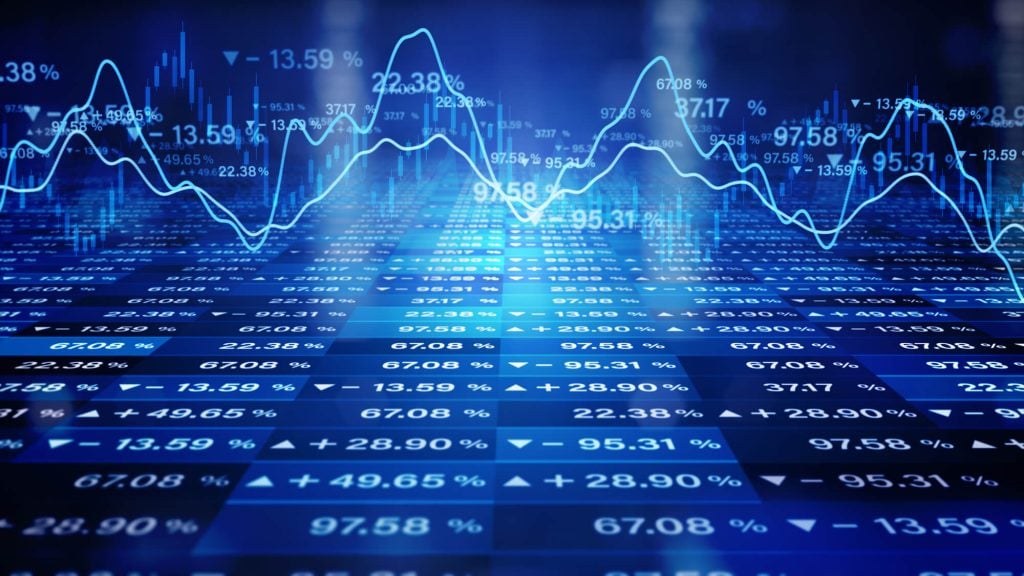AI in stock trading can track signals, scan data, and make instant decisions. These systems process headlines and trading behavior more quickly than a human can, and they can help avoid emotional pitfalls, such as panic selling or FOMO buying, that can derail even experienced investors.
In this article, you’ll learn how AI trading works, the requirements for its use, its pros and cons, and how investors are implementing it in quickly moving markets.

What Is AI Trading Really?
AI trading uses advanced algorithms to scan news, track prices, and spot trends faster than any human could. These systems analyze years of data in seconds, linking patterns like supply chain hiccups to stock dips or social media buzz to sudden price jumps.
AI can:
- Spot trends in historical and real time data
- Generate investment ideas
- Build portfolios
- Use predefined strategies to execute trades
Whereas a human investor may read through just a few charts, an AI-backed platform can analyze millions of data points simultaneously, giving investors an advantage they’ve never had.
Implementing AI in Stock Trading
AI trading starts with data that can include millions of market signals, financial reports, or even behavioral patterns. Raw data alone, though, doesn’t generate smart trades. The next step is turning that data into insight, and this is where machine learning enters the picture.
Machine Learning for Stock Prediction
Machine learning powers many AI trading systems by analyzing patterns and forecasting stock price changes and market behavior.
These models analyze a variety of inputs, including financial reports, stock market trends, and investor sentiment on social platforms to generate signals for investment decisions.
These predictions are used by traders and institutions in multiple tools and systems:
- Stock trading and analytics software
- Algorithmic and high-frequency trading platforms
- Portfolio management tools that adjust asset allocation based on risk models
The performance of machine learning in stock prediction depends on the depth, variety, and accuracy of the data it receives, along with the model’s ability to learn from changing market conditions.
Accessible AI Trading Platforms
Some platforms now enable individuals to create, test, and launch trading strategies using plain English rather than code.
These platforms offer features like:
- Strategy creation and testing
- Historical market data analysis
- Real-time monitoring with custom alerts
- Alerts linked to important market events
Execution-based tools help traders keep things steady, allowing them to execute their trades without emotions driving their decisions. Many also allow for 24/7 analysis of the market itself, scanning indicators and broader economic signals to make sure strategies are kept responsive and informed.
But with accessibility comes risk, and the risk is very real. AI models can still be disrupted by unusual market conditions, such as flash crashes and regulatory announcements. And that’s why you need to treat these tools as enhancers, not replacements, for your own judgment.
Revisit your automated rules regularly to ensure they are still appropriate for current stock market dynamics, and be aware of events that may override algorithmic logic.
Benefits of AI-Powered Stock Trading
Here are some of the ways AI in stock trading can benefit you:
Enhanced Analytical Capabilities
AI trading tools can sift through vast amounts of data faster than any human could. They can scan stock prices, company reports, and even news updates all at once, spotting connections that most traders would miss.
Whereas humans might fixate on one or two things (such as earnings or news), AI looks at dozens of factors at the same time — a kind of big-picture view that helps detect risks early.
Elimination of Emotional Bias
AI trading eliminates the emotional traps that derail even experienced investors. When markets start to swing wildly, fear can make you sell low, or greed can get you to chase overvalued stocks.
But AI trading systems override those impulses and just follow their trades according to the rules you set up ahead of time. They remove emotion from the equation and help traders remain disciplined.
Improved Efficiency and Opportunity Capture
Automated trading systems never sleep, eat, or take breaks; they scour markets 24/7, catching opportunities you might miss while offline.
These systems can fire off real-time alerts or execute trades instantaneously when market conditions hit a certain trigger — and that kind of speed really makes a difference.
In fast-moving markets, entering (or exiting) a trade one way or another even seconds earlier can alter its outcome.
AI keeps everything in check for traders juggling multiple positions. It governs assets across markets, manages strategy rules, and executes, all in parallel. This means that you can scale your trading activity without overextending yourself or missing opportunities.
Challenges and Limitations of AI Trading Algorithms
AI trading tools aren’t bulletproof — they come with limitations that need careful risk management. These challenges and limitations include:
Compliance and Legal Pressure
Most trading rules were designed for humans and not for algorithms that constantly change with time. Now regulators are attempting to apply those rules to systems that don’t always operate in predictable ways, and that’s a genuine challenge.
If you’re using AI to trade, you’re still responsible for keeping records, staying within market rules, and proving that your system doesn’t cross the line.
Barriers to Practical Use
To use AI in stock trading, you need serious skills in coding, finance, and machine learning. These are skills that most traders don’t have.
You’ll also need to consider the costs associated with AI trading tools. High-quality data, robust infrastructure, and powerful tools rarely come at a low price.
Technical Risks and System Failures
Models that rely too much on past data can get blindsided when the market takes an unexpected turn. Just because something worked in the past doesn’t mean it will hold up tomorrow. Markets evolve, and if your model isn’t built to adapt, it’s likely to fall short.
Also, an approach that seems brilliant in testing might crumble when there’s actual money at stake. This is because simulated results cannot capture the pressure, volatility, or fast-paced decision-making that comes with live trading.
Best Practices for AI Stock Trading
Here’s how to make the most of AI in stock trading and avoid the common mistakes most traders make:
Blend AI With Human Judgment
AI can run the numbers faster than you can, but it still doesn’t understand context the way people do. The best traders find a balance between AI’s precision and their own human experience. When the market throws a curveball, human oversight can help avoid blind spots that AI trading algorithms can’t catch.
Test Before You Trade
Never go live without stress-testing your system. Backtest your strategy across different market conditions. Run paper trades to see how it performs today and not just in theory. Start small when you go live. Scale only after your system proves itself.
Keep Risk in Check
No AI algorithm can guarantee you wins, so you still need a proper risk plan.
Establish hard limits on position sizes, stop-losses, and overall exposure. Revisit your risk settings frequently — markets are dynamic, and that means your guardrails should be too.

Learn From the Experts at Gorilla Trades
For more than 20 years, thousands of investors, stockbrokers, and fund managers have relied on Gorilla Trades to provide them with the investing information they need.
Whether you’re just getting started or trying to breathe new life into your stock picks, Gorilla Trades can help you become a stronger, smarter investor with proven strategies. Start your free trial today if you’re looking to take your trading to the next level and improve your strategies.




